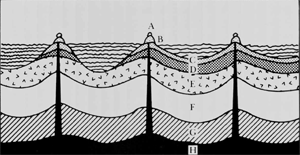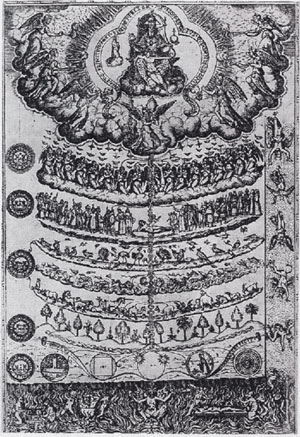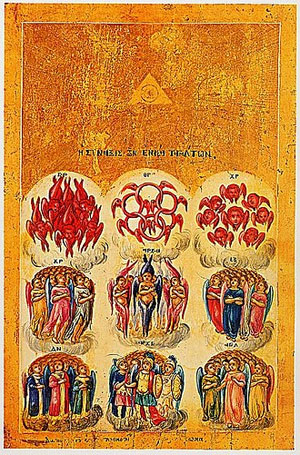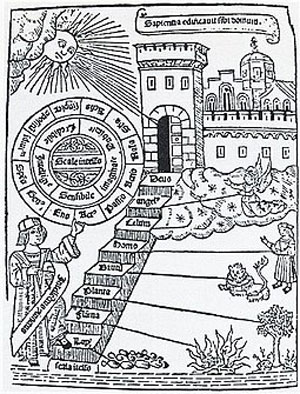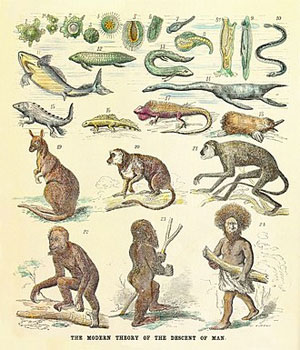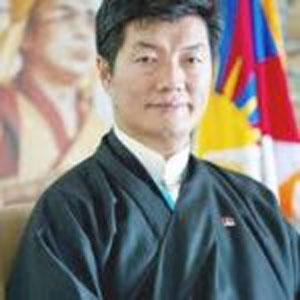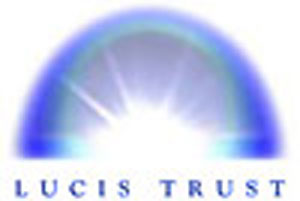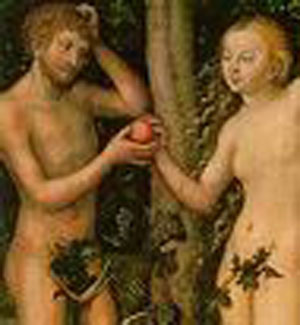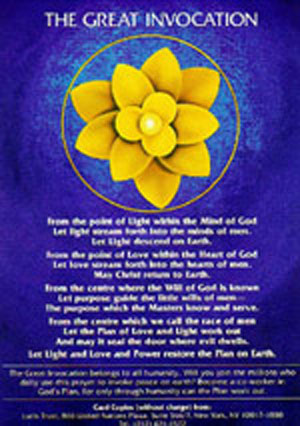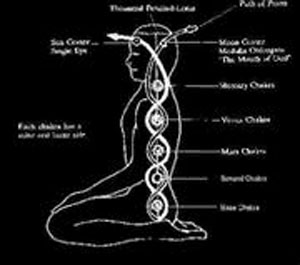Part 1 of 5
In Resonance with the Living Earth: Newsletter 2019 #1by World Goodwill
https://www.lucistrust.org/world_goodwillAccessed: 4/15/19
NOTICE: THIS WORK MAY BE PROTECTED BY COPYRIGHTYOU ARE REQUIRED TO READ
THE COPYRIGHT NOTICE AT THIS LINK BEFORE YOU READ THE FOLLOWING WORK, THAT IS AVAILABLE SOLELY FOR PRIVATE STUDY, SCHOLARSHIP OR RESEARCH PURSUANT TO 17 U.S.C. SECTION 107 AND 108. IN THE EVENT THAT THE LIBRARY DETERMINES THAT UNLAWFUL COPYING OF THIS WORK HAS OCCURRED, THE LIBRARY HAS THE RIGHT TO BLOCK THE I.P. ADDRESS AT WHICH THE UNLAWFUL COPYING APPEARED TO HAVE OCCURRED. THANK YOU FOR RESPECTING THE RIGHTS OF COPYRIGHT OWNERS.
About World GoodwillPeople of goodwill are those who think and act with a measure of loving understanding and of concern for the well-being of all. The energy of goodwill is potentially a powerful force for social change – yet its power remains largely unrecognized and underutilized. World Goodwill fosters understanding of this energy and the role it is playing in the development of a new humanity.
It is the thoughtful, planned action of networks of goodwill that is driving the response to all the problems of our age: from poverty, poisoned race relations and environmental destruction through to sentimental spirituality, despair in thinking about the future, and the crises of materialism and selfishness. People of goodwill from all cultures, faiths and professions are creating, through their words and actions, a new world where sharing, cooperation and right relations are taking root and spreading. Never before in the history of the planet has goodwill been so active.
The diversity and variety of initiatives means that the people of goodwill can never be organized into one unitary movement or network. Every community has its people of goodwill. It is goodness and love, in their most basic human expressions, that are driving the momentum of change, challenging all of the habits of separative thinking and action. Recognition of the sheer abundance of goodwill action as it exists today and the countless movements drawing on the energy of goodwill changes the way we see what is happening in the world. It is empowering and it gives us grounds upon which hope and faith in the future can grow. Truly, goodwill has the potential to become the keynote of a new civilization of wholeness.
To bring in the new day and the human well-being which is our spiritual birth-right, we need a deeper sense of reality based on spiritual values, and a new perception of humanity as a unit of divine life within an ordered and purposive universe. The following six recognitions can provide a basis for this deeper understanding:
1 Humanity is not following a haphazard or uncharted course – there is a Plan. This Plan has always existed and is part of the greater design of the Cosmos. The Plan has worked out through the evolutionary developments of the past, and because of the special impetus given it from time to time by the great leaders, teachers and intuitives of the human race. This leads to the second key recognition.
2 There exists an inner spiritual governance of the world led by enlightened beings whose ideas inspire all forward-thinking evolutionary progress in human consciousness. They are known under such different names as the spiritual Hierarchy, the society of Illumined Minds, or Christ and His Church, according to various spiritual traditions. Humanity is never left without spiritual guidance or direction under the Plan.
3 There is a widespread expectation that we approach the “Age of Maitreya”, as it is known in the East, when the World Teacher and present head of the spiritual Hierarchy, the Christ, will reappear among humanity to sound the keynote of a new age.
4 There are millions of mentally alert people in all parts of the world who are in touch, either subconsciously or consciously, with the Plan, and work to give it expression. In them, the consciousness of humanity as one interdependent unit is alive and active. They regard the many differing national, religious and social systems in which they serve as modes of expanding human consciousness and ways by which humanity learns needed lessons. Through their living example, they give humanity a new and better vision of what life should be.
5 The heart of humanity is sound. Our era is notable for the growth of goodwill and altruistic endeavour. All the crises, wars and catastrophes of the twentieth and twenty-first centuries have been unable to crush the human spirit.
6 The Plan for humanity is based on the principles of sharing, co-operation, practical brotherhood, right relationships between all people and between nations, and goodwill in action.
These recognitions give a new perspective on spiritual reality and place our present crises in a wider context. They provide opportunity for co-operation with the spiritual evolution of humanity and increase our capacity for freedom.
There is no group so likely to ensure that humanity achieves this most difficult goal as people of goodwill. Provided they can overcome inertia, they are in a key position, requiring only courage to express goodwill, and to initiate action to prepare for a new global civilisation.
OrganisationFounded in 1932, as an activity of Lucis Trust, World Goodwill programs and publications are administered by an international group operating through headquarters in London, New York and Geneva. There is no membership and programs are available to all people of goodwill without charge. The work is funded entirely by donations.
Alongside countless other groups, World Goodwill is an accredited Nongovernmental Organization with the Department of Public Information at the United Nations. It maintains informal relations with a wide range of national and international nongovernmental organizations. The Lucis Trust is on the Roster of the United Nations Economic and Social Council. World Goodwill strongly believes that the UN should be supported as the main hope for humanity’s future.
ObjectivesIn promoting recognition of the power of goodwill in our time, World Goodwill has three primary objectives:
• To help mobilize the energy of goodwill through education, and through subtle action with programs that draw on the power of thought. At the heart of every human being there is a reservoir of goodwill accompanied by deeper warrior-like qualities: the will to good and the will to love.
• To foster a universal spiritual perspective on the future, centered on the idea that all faiths throughout history have anticipated an age of peace and justice, ushered in by a World Teacher Who embodies divine principles. The rising tide of goodwill in the world today is a sign that the appearance of such a teacher, expected by different traditions under such names as the Christ, the Kalki Avatar, the Bodhisattva, Lord Maitreya, the Imam Mahdi, and the Messiah, is now imminent.
• To study the causes of major world problems in such a way as to reveal universal principles, spiritual practices and actions that contribute to the healing, transformation and resolution of the problem.
Mobilising GoodwillFocussed enlightened public opinion can be a major factor in world reconstruction, but it has been little used up till now. The major need today is to educate world public opinion in the significance of goodwill as a powerful creative energy and way of life; and to mobilise people everywhere to establish goodwill as the keynote of the coming new civilisation. World Goodwill aids in this task by:
Advising individuals and groups on how to increase their effectiveness in service.
Co-operating with the world service activities of other groups
Supporting the work of the United Nations and its Specialised Agencies as the main hope for humanity’s future, including a blog and Facebook page on World Goodwill at the UN.
Meditating on the energy of goodwill (Goodwill Meditation Group); the Cycle of Conferences (helping create a positive mental climate for conferences taking place on specific world problems); and the Twelve Spiritual Festivals (focusing on the spiritual energies available within the annual lunar cycle)
A Worldwide Educational Program which includes:
A Website and Publications in many languages presenting the principles underlying right human relations, and the fact of a divine Plan as a spiritual reality working out in crucial areas of human affairs, including education, religion, economics, politics, etc. Publications are available for distribution.
The World Goodwill Newsletter, Commentaries and World View articles, highlighting the energy of goodwill in world affairs. A universal spiritual approach is presented to topics of current concern.
Study Papers dealing with some of the world’s major problems.
World Goodwill Seminar, an annual meeting in London, New York and Geneva. Through meditation, talks and discussion the work of groups and individuals actively meeting world need is highlighted. Broadcast globally on video.
The Reappearance of the ChristThis is a time of preparation not only for a new civilisation and culture, but also for the coming of a new spiritual dispensation.
At the end of an age human resources and established institutions seem inadequate to meet world needs and problems. At such a time, the advent of a teacher, a spiritual leader or avatar, is anticipated and invoked by the masses of humanity in all parts of the world.
Today the reappearance of the World Teacher, the Christ, is expected by millions, not only by those of Christian faith but by those of every faith who expect the Avatar under other names – the Lord Maitreya, Krishna, Messiah, Imam Mahdi and the Bodhisattva.
Distortion and mis-understanding surround this central fact of divine response to human need. This is inevitable but unimportant. The fact of transition into a new age is important. Preparation by people of goodwill is needed to introduce new values for living, new standards of behaviour, new attitudes of non-separateness and co-operation, leading to right human relations and a world at peace. The coming World Teacher will be mainly concerned, not with the result of past error and inadequacy, but with the requirements of a new civilisation and with the reorganisation of the social structure.
World Goodwill distributes literature on these themes. A world prayer, the Great Invocation, is distributed on a world-wide scale in many languages and dialects.
World Goodwill also co-operates in organising the annual World Invocation Day, with special focus on the use of the Great Invocation worldwide.
Problems of HumanityThe problem of establishing right relationships between people and between nations is of urgent concern in a world in crisis. The immediate spiritual problem is that of offsetting selfish separateness by the technique of trained, imaginative, creative and practical goodwill.
World Goodwill provides a series of study papers on the major problems of human progress. Emphasis is placed upon underlying causes and emerging trends rather than on a factual survey of events. The use of the trained mind in reflective thought and meditation is encouraged.
The problems dealt with include:
• The Psychological Renewal of the Nations
• Children, Youth and Education
• Capital, Labour, and Employment
• The Racial Minorities
• The Churches and Organized Religion
• International Unity
There are many lesser problems but these are the major ones with which humanity is at this time confronted and which must find solution. This will be done by the establishing of right human relations.
The formation of study groups is encouraged so that through study, discussion and meditation a “thoughtform of solution” may be generated and local forms of service activity initiated.
Practical AimsTo encourage people of goodwill everywhere to establish right human relations between races, religions, nations and classes
To assist people of goodwill in their studies of world problems, and in the effective application to these problems of goodwill, co-operation and sharing for the common good.
To co-operate with other organisations in constructive activities contributing to world unity, stability and right human relations.
To make available up-to-date information on constructive current action in the main areas of human life through regular publications on issues of world interest.
To aid in establishing goodwill as the keynote of the new civilisation.
To create a worldwide contact list of people of goodwill.
To support the work of the United Nations and its Specialised Agencies as the best hope for a united and peaceful world.
World Goodwill is an activity of the LUCIS TRUST, which was founded in 1922 and is a registered educational charity in Great Britain. (Charity Nº 216041)
***
GOODWILL IN WORLD AFFAIRSExploring world events through the lens of goodwill, via our newsletter, commentaries and World View articles
NEWSLETTER 2019 #1 - IN RESONANCE WITH THE LIVING EARTHIn 2018, the World Goodwill Seminars in London, Geneva and New York focused on the theme In Resonance with the Living Earth. Over two days, speakers from diverse backgrounds shared their experiences and insights on how humanity can bring itself more into resonant harmony with the other kingdoms of nature, both spiritual and material. The positive significance of the UN’s Sustainable Development Goals (SDGs), as practical guidelines for humanity to become a more responsible steward of the animal and plant life and the minerals of the planet, received special attention at the meeting held in UN Headquarters in Geneva.
Hylozoism – an unusual word for an ancient concept: that all matter is alive. When we take this thought seriously, then the idea emerges of the Earth itself being alive, and the life of our species being an integral part of this great Life. And we can expand the thought still further, seeing humanity as an active participant in a Kosmos thrilling with the energy of Life, evolving purposefully towards states of increasing perfection. This vision has always been part of the ageless wisdom tradition, and is also held, in varying degree, by a number of religious faiths.
As noted in New York, it is humanity’s responsibility to help raise the vibration of the lower kingdoms, through sympathetic resonance, as part of this Kosmic perfecting process. Unfortunately, over the last few centuries, we have been neglecting this responsibility, and the results of this neglect are now imperilling our own survival.
Recognition of this fact, and intelligent, compassionate responses to it, informed the presentations at the meetings. In Geneva, the key importance of the will qualified by good was recognised, and it was observed that as “the dynamic energy of the soul, will can lead us to realise our purpose based on a fraternal vision of humanity. It is then that competition will give way to collaboration, and sharing will offset any selfish attitude.”
If we ponder how the future of our relationships with other beings might look, we could conceive of it as a vast collective meditation upon other beings as co-participants in the great web of life. If the mentally focused insights of a more patient and humble science can blend with the heart-filled connection with other beings that has always been available, then a truer cooperation among the various kingdoms of nature, mineral, vegetable, animal, human and spiritual, can arise. In this future, where diversity of form and function is not just accepted but celebrated, we should be able to develop ways to sense and cooperate with evolutionary purpose.
One Theme, Three Locations, Many PresentersIn order to contain the material within the space of one issue, this year we have opted to give a short extract from each speaker’s presentation, staying as close as possible to their original words, so that their energy will hopefully be conveyed. As previously, there is biographical information and a link to the full video of each presenter in the article.
Vita De Waal reflects on the importance of sound as a harmonising element and how this was already recognised in ancient times in the design of sacred spaces.
Jeremy Dunning-Davies warns of the danger of placing too much faith in mathematics as a guide to understanding the physical universe.
Marco emphasises the importance of international cooperation, and how cooperation can challenge us to radically shift our perspective.
María Crehuet Wennberg notes the need to bring an end to our obsession with economic growth, and to build a new culture based on personal responsibility and interdependence.
Giles Hutchins shares his thoughts on how to learn from living systems, and use these insights to help build healthier systems and organisations which are life-enhancing.
René Longet explains the emergence of the key concept of sustainable development.
Jen Morgan considers the ways in which diversity, a central aspect of living systems, can strengthen groups and societies.
May East points out the interdependence of the SDGs, and speaks about the next step on from sustainable development, the regenerative approach, which designs for evolution.
Takeo Inamura & Takeshi Muranaka discuss how their objective in creating a card game based on the SDGs is to help individuals recognise the interdependence of the goals, and their own personal responsibility in helping meet the goals.
Mary Stewart Adams invites us to reflect on the wider cosmic relationship of humanity with the starry heavens and how this connects with our responsibilities to the natural and spiritual world.
In Resonance with the Living Earth – Past, Present but... what about the Future?Vita de Waal is the founder and director of the Foundation for GAIA and the NGO Alliance on Global Concerns. She chairs two NGO Forums working with UN programmes and is on the Board of an ICOMOS International Scientific Committee on Places of Religion and Ritual. Video at worldgoodwill.org/video#vwEverything in our three dimensional universe is subjected to movement. All movement generates sound and resonance which has oscillations, waves, frequencies, speed and direction. Movement can create turbulences, currents, orbits, time, sound, harmonies, rhythms, colours, diversity, continents, regions, root races, seasons, days, nights, and everything in between. Movement can be upward or downwards, inner, outwards, spiral clockwise or counter clockwise, be yin, yang, hot, cold, light, dark, creative, separative, generative, degenerative, attraction, opposition, birth, decay, sickness, health etc.
In the three dimensions which we inhabit, change is the norm, change is law, because there is sound and movement all the time. Therefore, if we want to stop something, keep something as it is or was, that is completely unnatural.
Adolf Zeising wrote in 1854 of a universal law... in which is contained the ground-principle of all forms... in the realms of both nature and art, and which permeates, as a paramount spiritual ideal, all structures, forms and proportions, whether cosmic or individual, organic or inorganic, acoustic or optical; which finds its fullest realization, however, in the human form. In that sense, for him, the human form was the pinnacle of this coming together.
The human dimension is important. While there is a unit in time, it is how we use it. Take the monkshood plant (aconite) that can be used to heal but in too large a dose can kill, or sound itself, which can be used to heal or to torture. Free will is a human prerogative and the use of it determines if we use this in harmony , in resonance, with universal law or not.
It is said that Pythagoras pondered for several years upon the laws governing consonance and dissonance. Since it seems that there are immutable constants in all of reality, there must be immutable laws that govern these. Therefore, to Pythagoras, music was related to the divine science of mathematics, its harmonies regulated by mathematical proportions.
The basic belief that geometry, proportion, mathematical ratios and harmonics were found in music was already known by ancient civilizations and used in the building of prehistoric sites. This re‑discovery has opened up a new field of study, archaeo‑acoustics, which analyses the acoustic properties and use of ancient megalithic sites and Neolithic caves.
The prehistoric El Castillo cave in Spain was already used by hominids 40,800 years ago. Sound was recorded within this cave at a position where individuals would have observed the ritual by a shaman. Subsequent analyses identified a frequency‑dependent amplification of recorded sound intensity for frequencies approaching 100 Hz, with the greatest effect observed at 108 and 110 Hz. This frequency range around 110Hz stimulates a certain electrical brain rhythm associated with intuition, creativity, holistic processing and inducing a state of meditation and tends to induce trance‑like states.
Pythagoras created his musical scale starting with note A that resonates at the frequency of 111Hz. Recent findings of MRI research shows that the brain switches off the prefrontal cortex, deactivating the language centre, and temporarily switches from left to right-sided dominance. Today, mindfulness meditations are not only used for relaxation but also for healing and a study showed a lengthening of telomeres (strands of DNA) that tend to shorten with age, leaving chromosomes vulnerable to deterioration. Telomeres are shorter in people with chronic disease and high stress and longer in young, healthy people. Researchers correlate a lengthening of telomeres with meditation.
Archaeo‑acoustics show that sound at Newgrange in Ireland which was built during the Neolithic period more than 5,200 years ago and the 5,000 year‑old Hypogeum in Malta resonate both at 111 Hz. Bone analysis on location showed the Maltese to be a healthy population. It is likely that many more discoveries will be made about living in resonance with our Living Earth!
***
What’s Wrong with our Present-Day Scientific Thinking?Jeremy Dunning-Davies is a retired senior lecturer of Hull University in the departments of mathematics and physics. Video at worldgoodwill.org/video#jdI initially went to University to do pure mathematics but became more interested in Applied Mathematics. As a young research student I remember a Professor giving me a problem to look at which I took home and really worked at, neatly underlining the final answer in red. I brought it in the following day very pleased with myself and gave it to him. He studied it for a while and then suddenly looked up and said “This is fine but what does it mean physically?” I was completely taken aback. He said “What’s the use of a mathematical equation if you don’t know what it means physically?” This was a turning point for me and I think it summarizes what’s wrong with a lot of modern day science where the focus is on trying to make physics fit the mathematics rather than the other way around.
The problem goes back quite some time. In the 19th Century, most activity in physics was going in the direction of electromagnetism. People like JJ Thompson were all working on it, and we had a theory of Relativity by Lorentz that included the ether. Then came Einstein’s papers of 1905 on Special Relativity although nobody took much notice at the time. However, around 1920 his work suddenly came into vogue and Lorentz’s theory was pushed into the background. At this point, science suddenly dispensed with the ether and you could no longer mention it. Then the problems began.
Recently, the CIA released one or two documents containing material possibly linked with Nikola Tesla. I’ve got together with Rich Norman, Scientific Advisor of Thunder Energies Corporation in Florida, and we’ve been talking about an ether in connection with this newly released work and there seem to be possibilities that we can rewrite at least some results without recourse to quantum mechanical ideas by simply using the properties of an ether. It seems you just don’t need quantum mechanics, which is a lovely theory even if people are a bit uneasy about some areas of it. Einstein of course, was very worried about quantum mechanics right to the end of his life.
Our work on the ether and electromagnetism is in harmony with Wal Thornhill and the Electric Universe movement. This group stresses the importance of electromagnetic fields and electric currents present in space, which takes us back to the Scandinavian scientist Kristian Birkeland who used to go out and observe the northern lights and then conduct his own experiments. These were called the Terella experiments and he could actually recreate the aurora in a scaled down form in his laboratory.
Birkeland came up with the theory of how the sun and the earth are linked through a flow of charged particles. But at the same time a British geophysicist, Sydney Chapman, came up with a lovely mathematical theory whose conclusions were the exact opposite of what Birkeland’s experiments showed. Birkeland’s work was totally dismissed in favour of this mathematical theory. It was only in the 70’s that they were able to verify that in fact Birkeland was correct and Chapman wrong. A fact that has never really been made public. Unfortunately, this sort of thing is happening all the time.
The electric universe movement is coming up with explanations of phenomena that orthodox astrophysicists cannot explain but which they seem reluctant to discuss. However, there’s lot of research going on at NASA now that links up with Electric Universe theory. And it may surprise you to know that General Relativity is not used very much at all. Organisations like NASA use Newtonian mechanics – they don’t need supposed corrections from General Relativity. So is General Relativity correct? Is it necessary? It’s a lovely theory. Relativity is what I loved best in my final year as an undergraduate at university but why was I attracted to it? Put simply, I loved the beautiful mathematics!
With Special Relativity, not only did Einstein get rid of the ether, but because he used this mathematical transformation called the Lorentz Transformation, he brought in all those peculiar anomalies such as the Twin Paradox, Time Dilation etc., and yet if look at the work of James Paul Wesley, an American theoretical physicist, you don’t need the Lorentz transformation. If you just accept that E =mc2 which is an experimentally provable result, you can derive theoretically every useful result that comes from Special Relativity. I know this because I’ve done it. Wesley is a name not known to many though.
I don’t want to decry mathematics. It has its place, but when you study physical phenomena – maths should be secondary to the physics – you use it as a tool. No more; no less. A result from maths that makes a prediction should be examined observationally and/or experimentally to see if it matches up with the physics: – the maths shouldn’t dictate! You don’t force some physical phenomena that has been witnessed to conform to some mathematics that has been dreamt up in separate circumstances.
So if you ask me what’s wrong with science today I would say too often the physical end result is being made to link up with some theory rather than the theory being secondary to the physics of the situation. There are plenty of examples – I’ve just mentioned a few. Beautiful mathematics in isolation from physical reality is the thing from which we really have to get away.
***
International Cooperation: an added bonus, a duty, a necessity or an unstoppable natural tendency?Marco has worked for over twenty years in international service organizations, in the field and at headquarters. Video at worldgoodwill.org/video#mrWe all have experienced those moments in life when we need to make sense of things in our own world. Those moments are indeed quite interesting. And we know that we cannot make sense of things all the time. To be successful we need to have that urge, the moment needs to be ripe.
When we make sense of things, we give them focus, purpose and direction. We give them meaning both as pieces and as a collective. It is quite an important moment of synthesis. Normally a cycle closes and a new one opens. It is a foundational moment.
It seems to me that this is one of those moments, but on a planetary scale.
Over the past 73 years a few spectacular and unprecedented things have happened:
• the forging of a planetary plan based on an agreement, i.e. based on an expressed manifestation of will – that is the UN Charter and the SDGs;
• an incredible development of international law to address complex issues, as the basis of the existing world order;
• the number of sovereign states has almost tripled;
• the number of associations and private entities and companies has exponentially grown;
My impression is that over the past 73 years there has been, and is still happening, an explosion of will! Let alone the fact that from 2.5 billion we have now become over 7.6 billion and growing – that's a lot of individual wills to engage with! A lot of will and thus force at disposal!
That is not a small thing.
The world has become, to say it with the political scientists – multipolar. A multiplicity of centres of will, active and pursuing their interests.
This may mean that traditional ways to use will, exercise will, may no longer be applicable, nor useful.
We witness the challenges that a multipolar society is representing for our conception of democratic government and exercise of power, as it has been developed over the past roughly 2500 years.
That will require, probably, the search of a new paradigm to channel and use constructively all that will energy that is entering into manifestation through the growing numbers of individuals and organisations.
The test we are facing is one of the use of collective will, group will. How to forge a truly collective will out of individual wills.
Is cooperation the tool to find a new paradigm for the collective use of will toward the continued evolution of the planet?
Yet, are we familiar enough with cooperation?
Indeed, how can we expect nations to cooperate if we, as individuals, even well-intended individuals, do not cooperate, or do it with difficulty? How can we expect our nations to cooperate with others if we, as people and citizens, do not give the right guidance to our governments through carefully thought-through and heart-born models and ideas based on our daily testing and divine instinct?
There is a need to speak more about cooperation, and not just as a beautiful thing, but also the challenges it brings to us, as individuals and as groups, in order to identify ways to overcome them.
Cooperation by default goes beyond the consciousness of an individual and requires the individual to cross that border and enter into the other's shoes. It is about entering an unknown space which can be discovered and mapped only together with others... indeed in cooperation with others!
As such cooperation is not necessarily a means to an end... rather a means to discover ends. In other words, it is important to appreciate the difference between: cooperating to get something done vs cooperating for the sake of it in order to allow and then figure out what to get done.
***
A New Ethical Culture: Values and Alternative Projects for a Finite PlanetMaría Crehuet Wennberg is responsible for the Energy Policies of the Associació de Micropobles de Catalunya and is vice-president of CMES (Collective for a Sustainable Energy and Social Model). Video at worldgoodwill.org/video#mw"In the near future the knowledge society will make place for a society of a new ethical culture, a place where we will all be in a position to host the seed of generosity, the only engine capable of positively transforming everything we know."
What do we need to become that new society? Where are we now?
In mid-September, European scientists and politicians met in Brussels under the headline: Last call. Europe, the time has come to put an end to dependence on growth. These scientists raised the point that: Growth is becoming increasingly difficult to achieve due to falling productivity gains, market saturation and ecological degradation. If the current trend continues, there may be no growth in Europe in a decade. Right now the answer to this problem is to try to activate growth by expanding debt, dismantling environmental regulations, extending working hours, and social cutbacks. This aggressive pursuit of growth at any cost fragments society, creates economic instability, and destroys democracy.
They propose four actions, to start slowing down:
1. Set up a special committee in the European Union Parliament on the future of Post-Growth.
2. Incorporate alternative indicators in the macroeconomic frameworks of the EU and its member states, indicators that should have greater importance in decision-making processes than those currently held by GDP.
3. Transform the Stability and Growth Pact into a Stability and Welfare Pact.
4. Create a Ministry for Economic Transition in each of the member states. A new economy that focuses directly on human and ecological well-being could offer a much better future than one that is structurally dependent on economic growth.
There are already many organisations working in this direction. Yet ideas of all these movements that are penetrating the minds of a part of society are also being manipulated by big lobbies taking over the discussion in order to continue selling whatever it may be. It is trendy to do so under labels of ‘ecological’, ‘green’, ‘sustainable’, ‘alternative’... Do we fall into the trap? Do we see the signs that warn us of danger? Or do we continue to drive carelessly and at full speed towards the abyss?
This new culture must change many things – for example:
• the social framework in which we move from a system based on individualism to one based on engaged and active citizens;
• technocracy must give way to real democracy;
• the secrecy that hides so much corrupt behaviour must perish in the face of real transparency;
• the ‘hard’ economy that lives at the expense of the weakest must be replaced by a ‘soft’ economy that knows how to share;
• that attitude of only thinking about this generation needs to make a turn towards a deep respect for the environment and to think that any action has an impact, and that this must be beneficial for many generations (Native Americans said that we should think at least until the 7th generation before deciding on an act);
• we must also rethink globalisation which, although in itself a good idea, has only served to benefit the big lobbies by impoverishing local economies, so we must rethink producing and consuming 0 km products;
• the laws that, necessary in the beginning, have become a rigid corset that oppresses us and that we should learn to accept flexibility, yet being strict at the same time;
• change the monologue of a single actor that is the State for a choral work whose actors are the entire society.
To build that kind of society it is essential that its components, all citizens, be responsible and inter-independent.
This new culture must be based on individual change, knowing and understanding that no change is really strictly individual: if a person changes, that change ends up influencing the family, the neighbours, the neighbourhood, the municipality, the region, the nation and the Planet, until it reaches the entire Universe.
Nothing is impossible.
***
Sensing Evolutionary Potential: Co-creating Magnificence with the More-than-HumanGiles Hutchins is a keynote speaker, adviser and executive coach at the fore-front of a [r]evolution in leadership consciousness and organisational development, stimulating head-space and heart-knowing for forward-leaning leaders and organisations to become vibrant, purposeful and future-fit. He is the author of three books, and his latest TEDx talk is entitled [R]evolution: Separateness to Connectedness. He blogs at http://www.thenatureofbusiness.org Video at worldgoodwill.org/video#ghThere are three levels of learning from nature, three levels of activating the logic of life. The first one is living systems design, (which Jen and Dominic have already explored a little – for example, permaculture). Living systems design involves ways in which we can look at the patterns and life principles that we find within the living systems that we operate in, and apply these to our ways of designing products and processes. So this is biomimicry design, this is permaculture, this is closed-loop economics, circular economy, waste equals food, industrial ecology, biophilic design in our workplaces. There is a lot of really interesting work going on in this area at the moment, lots of innovations, very exciting.
Then there is applying living systems logic to our human cultures and our organisations. This recognises that our organisations aren’t machines, that they are actually living systems. When we can see that there are essential life dynamics that we can apply to our own ways of approaching life, we can see that there is an essential dynamic of divergence – opening up; convergence – bringing together; and out of that tension of the two comes emergence – the way in which we find our flow, the way in which we deal with our evolutionary potential.
So divergence in business is in terms of diversifying: distributing decision-making, decentralising it to empower people to make change happen at the local level, as mentioned by Jen. Also, as Jen said, this involves embracing diversity, but not just diversity of age, creed, culture and gender, which is very important, but also in terms of perceptual horizon – how we see things. This brings in different parts of the system, people from different silos, people from different parts of the stakeholder ecosystem, so the organisational membrane permeates more readily. This increases the relationality of our organisations, making them come alive, moving out of the mechanistic, soul-sapping cultures that we’ve got caught up in.
Now, divergence needs to be balanced with convergence, otherwise the organisation becomes too chaotic, too amorphous. That convergence has traditionally come through power-based hierarchies of control, because of the patriarchal, ego-explosion, scientific management thinking that we talked about earlier. That approach doesn’t help, because it undermines the divergence. So instead, we want convergence to come through a sense of purpose, as Jen discussed. And when we say a sense of purpose, we don’t mean rejigging the mission statement, or putting a new values charter on the wall: we mean deeply developing a resonant sense of purpose within the organisation. Extraordinary things happen when people resonate with the organisational sense of purpose, but for us to deeply resonate, for this sense of purpose to touch our humanity, it means that the organisational sense of purpose has to be, in some way, enhancing life. It needs to be life-affirming, because that is what turns us on. And sociological studies show that it can take as little as ten to fifteen percent of people in the organisation deeply resonating with that sense of purpose for a shift to happen: it becomes easier to let go of those power-based hierarchies of control, and allow more divergent ways of operating to happen. The organisation comes alive, and we find emergence flowing.
Finally, we come to the third level, living systems being…
***
Human Values and Sustainable Development in the World of TodayRené Longet is the President of the Fédération genevoise de coopération, and the vice-president of SIG, specialist on sustainable development. Video at worldgoodwill.org/video#rlWhat gives Sustainable Development to us?
In 1987, the notion of Sustainable Development was born: A development that “meets the needs of the present without compromising the ability of future generations to meet their own needs.” Two concepts are inherently present: 1) the “limitations imposed by the present state of technology and social organization on environmental resources” and by “the ability of the biosphere to absorb the effects of human activities”; 2) “Sustainable development requires meeting the basic needs of all and extending to all the opportunity to fulfil their aspirations for a better life. A world in which poverty is endemic will always be prone to ecological and other catastrophes.” (
http://www.un-documents.net/our-common-future.pdf § 27)
Economics: We need an inclusive, utility-oriented economy that can nurture the common good. In 2011, the UN Environment Programme (UNEP) defined a green economy as: “one that results in improved human well-being and social equity, while significantly reducing environmental risks and ecological scarcities.” 1
Cultural: Sustainability is finding the right balance between needs and means, being and having, today and tomorrow, North and South, humanity and nature. We need to modify the concept of progress, become involved ourselves to make the best choices as well as speak about responsibility and the long term.
Political: The World needs an inclusive governance, as well as a rebuttal of the neo-liberal viewpoint that the economy needs no regulation. Such a theory is false, as it fails to account for numerous environmental and social costs which are not reflected in the actual price. Thus markets are daily misrepresented; we cannot consider markets without regulation or regulation without markets.
So the State ought to be: accountable for equity, provide help to the weak in their relation to the strong, informative and vitalising, transparent, efficient, supporting engagement and determining priorities. The great challenges concerning the territorial dimension require global regulations, since financial exchanges, migrations, climate, oceans, biodiversity all transcend national boundaries.
***
From Concept to ActionIn 2000 the Millennium Declaration2 and the 8 Millennium Development Goals (MDGs)3, to be reached by 2015, included the elimination of extreme poverty and hunger, a pledge for primary education for all, the promotion of gender equality as well as women’s autonomy, and the reduction of infant mortality.
The June 2012 UN Conference on Sustainable Development (Rio+20) concerned two principal issues, the contribution of green economy in the elimination of poverty and the institutional framework for sustainable development.
The final document, called “The Future We Want” 4 proposed the replacement of the MDGs by the goals of sustainable development; they “should be action-oriented, concise and easy to communicate, limited in number, aspirational, global in nature and universally applicable to all countries, while taking into account different national realities, capacities and levels of development and respecting national policies and priorities.” (§ 247)
In September 2015, the UN General Assembly adopted the document Transforming our world: the 2030 Agenda for Sustainable Development (or Agenda 2030 5), including 17 Sustainable Development Goals (SDGs), “with 169 associated targets which are integrated and indivisible.” (§ 18).
The proper orientation of financial flows as a function of human needs – as defined by the SDGs – will enable us to fulfil the assigned tasks. The economy will be sustainable or it will not be, and conversely, sustainability will be economical or it will not be.
Towards a Sustainable EconomyA lot of goodwill is manifested through the social and solidarity economy6, and fair trade7, these being two forerunners in the present world of what the future economy should be. Innovative producers who propose services or goods of ethical, environmental, or social quality remain in the background, being too much ignored by markets and consumer choice. This has to be changed.
Orient financial fluxes in the right directionA noticeable proportion of the investments are engaged in non-sustainable, unethical or even a destructive manner, as is the case with coal, nuclear energy or agribusiness. There is also the Dark net of economy absorbing yearly about $35'000 billion! In order to realize the whole of the 17 SDGs, i.e. to bring the world towards sustainability, we would have to invest between $5’000 and $7’000 billion yearly. Therefore, we cannot claim that this money is not available!
Replace the universally used but misleading GDPThe GDP basically ignores anything which has not some monetary function… and adds apples and pears together: anything involving consumption being welcomed. It is time to replace it with indicators of sustainable development, of human development or – as the example of Bhutan8 shows, of national happiness, or the notion of ecological footprint9, an approach developed during the second half of the 1990s by Mathis Wackernagel. It does not include social aspects (“a social footprint”) but the link is evident: exploitation of resources leads to a deepening of inequalities and a sharpening of conflicts concerning access to resources. In a sustainably managed community, social cohesion increases, the ecological footprint decreases, and the economic web becomes sounder.
_______________
Notes:1 Towards a Green Economy, UNEP, Nairobi 2012, p. 9
https://sustainabledevelopment.un.org/c ... sis_en.pdf2
http://www.un.org/millennium/declaration/ares552e.htm3
http://www.un.org/fr/millenniumgoals/background.shtml4
http://www.un.org/ga/search/view_doc.as ... 288&Lang=E5
http://www.un.org/ga/search/view_doc.as ... 0/1&Lang=E6 Laville J.-L., Cattani A.-D., Dictionnaire de l’autre économie, Coll. Folio Actuel, Gallimard, Paris 2006
7
http://www.fairtrade.net8
http://www.grossnationalhappiness.com/w ... ressed.pdf9
http://www.footprintnetwork.org***
Reflections on Earth StewardshipA small selection of thoughts which were collated into a booklet for the seminar. To obtain a copy, please go HERE or download the PDF.
If you want to find the secrets of the universe, think in terms of energy, frequency and vibration. Nikola Tesla
I, the fiery life of divine essence, am aflame beyond the beauty of the meadows, I gleam in the waters, and I burn in the sun, moon, and stars .... I awaken everything to life. Hildegard of Bingen
This is one of the greatest challenges of our time: to convert ourselves to a type of development that knows how to respect creation. Pope Francis
The whole order of nature evinces a progressive march towards a higher life. Helena Blavatsky
There are no unsacred places; there are only sacred places and desecrated places. Wendell Berry
***
Relationships for Change: A Path towards Resonance with all of LifeJen Morgan is a strategist/entrepreneur working to ‘co-design and co-create strategies that can help accelerate human evolution and the thriving of all life on the planet.’ Jen is the Co-Founder of the Finance Innovation Lab – a globally recognized organisation for social innovation, and is currently Executive Director for The Psychosynthesis Trust. Video at worldgoodwill.org/video#jmSo let’s talk about Nature’s quality of diversity. Going back to the earlier example of the lake in New Hampshire, the lake survived for many hundreds of years, it evolved, it adapted, and it was perfectly working in balance and harmony. Till one year, there was a human intervention, when the local town wanted to attract as many fishermen as possible, so they over-stocked the lake with bass fish. In less than one year, the lake was dead: when I lay on the dock, there was no movement, no life. And it was almost what it feels like now: we have these mega species dominating our financial system, or the energy supplies, or the high street retailers. When I walk down the high street now, I don’t feel like there’s much life, it’s rather dead.
So what does diversity mean in groups? What do I mean by diversity? While I think that in groups and organisations in our society, diversity of race, age and gender is important, I think we are at risk of getting caught up in diversity of appearances rather than diversity of qualities. What I think is important in groups – and especially when we speak about vested interests – is to bring in diversity of thought, of capacities, diversity of emotions, diversity of energies. And this is what I think is important in social change.
Diversity for me is a moral imperative, but it is really a strategic imperative. And by strategic imperative, there are two main things that I mean in that. So it’s a strategic imperative because it does provide more resilience: we can pool our experiences, our capacities, our skills together, to almost act as a buffer against some of the shocks to our human systems, such as climate breakdown, and being in the midst of the sixth mass extinction of species on Earth. We are just on the edge of what we are going to experience in terms of shocks to our system.
The second strategic imperative that I believe that diversity brings is around coming up with better solutions. When I was leading the Finance Innovation Lab we brought all kinds of people together: activists, bankers, psychologists, academics, grass-roots organisers, to think about how could we build collective intelligence, to really shift the financial system? So for example we would bring activists and entrepreneurs together with policy makers, and one of our successes at the time was to create national policy that really allowed new entrants to come in much faster. That, in itself, will hopefully soon disrupt vested interests, so that the financial system is more diverse.
Another example is where we brought together the policy makers with the activists to work with entrepreneurs who were creating brand new disruptive business models, new currencies and financial products. So what we can do with this diversity is to see more of the whole, and see what was more relevant, at all of these different levels, so they could be implemented faster.
So what does it mean for me, as an individual in a group, thinking about diversity? This is a lot of what we teach at the Psychosynthesis Trust – skills that I’ve had to learn as well, around holding paradox. When you are in a diverse group, there are many different truths, and there’s One Truth; and there’s all this multiplicity, and you want to bring Unity together. How do you hold paradox in the groups that you are in? The other skill that I’ve had to learn is around really embracing conflict: when you bring in diversity and have different perspectives, there is often tension and difference, and that often leads to conflict, so how do you embrace conflict as a generative source, and how do you really appreciate difference?
So in the groups that you are in, how diverse are your groups really? How could you bring in more diversity of quality in these groups? And how are you developing your skills to synthesise diversity in groups and in yourself? In psychosynthesis we teach about the sub-personalities, so what I’ve had to learn for myself is how different parts of myself can work together so I have more coherence – how can my mystic side work with my pragmatist side?
***

